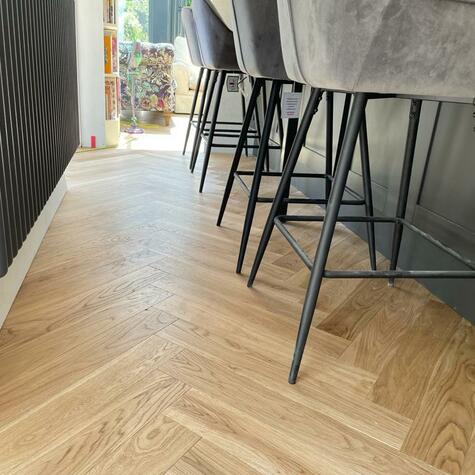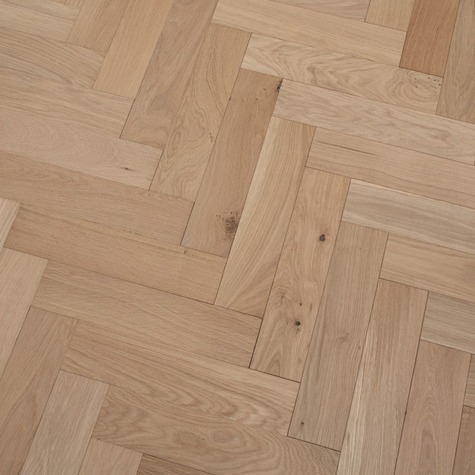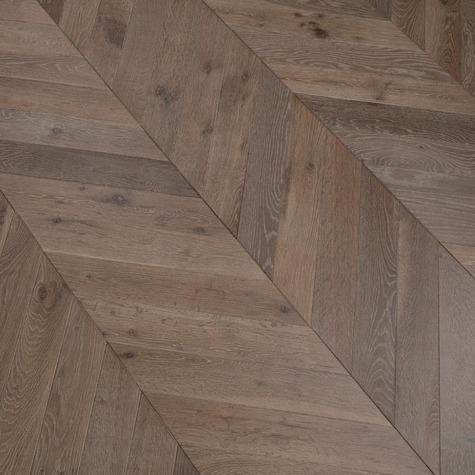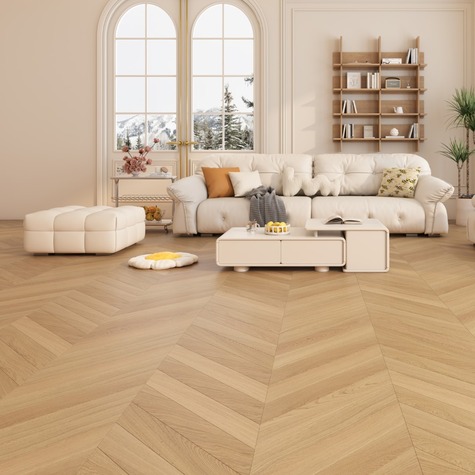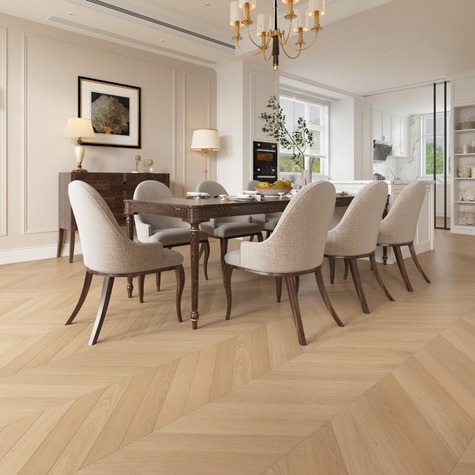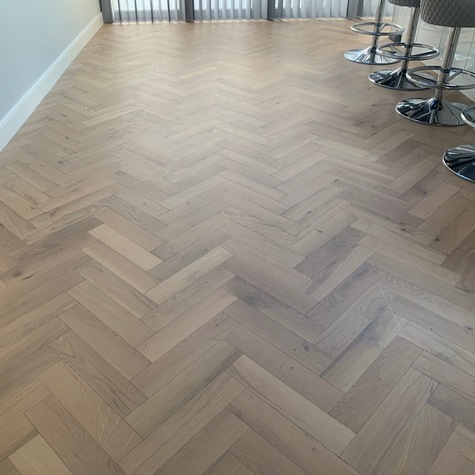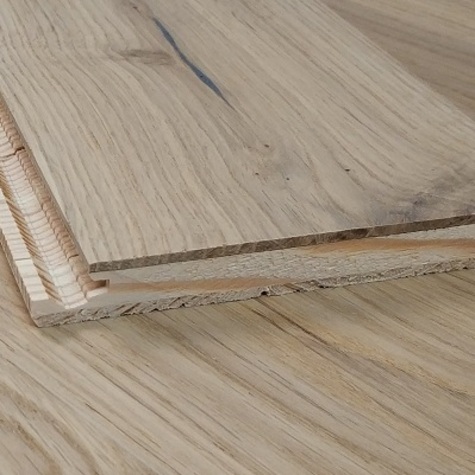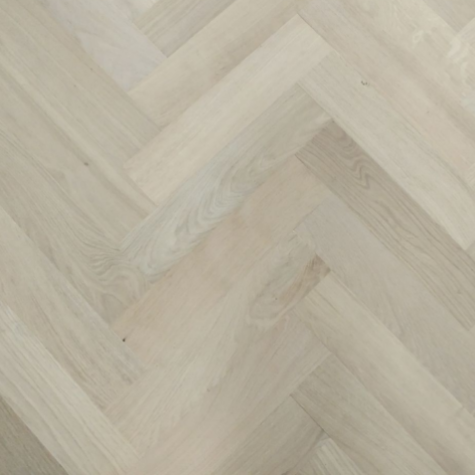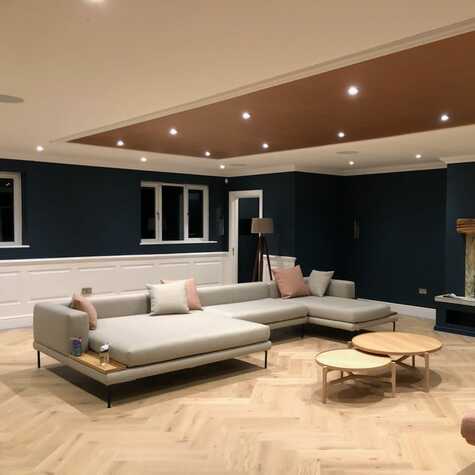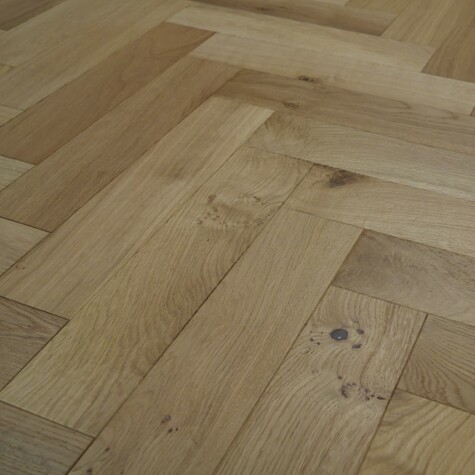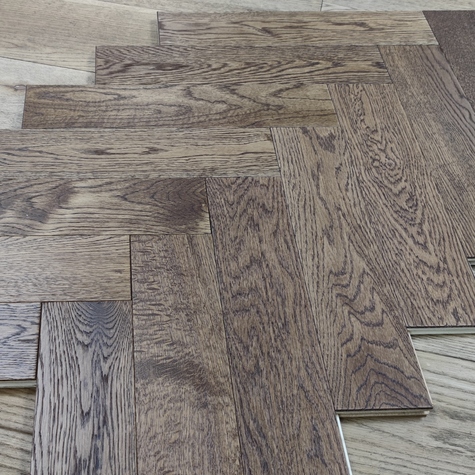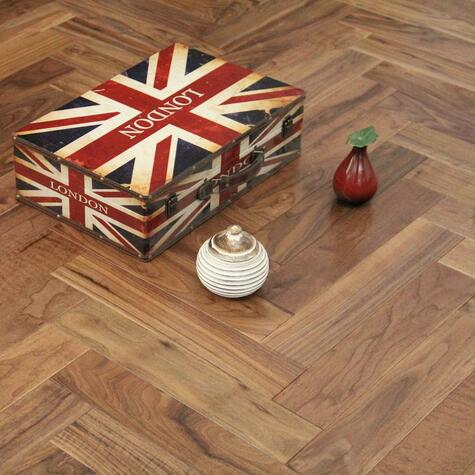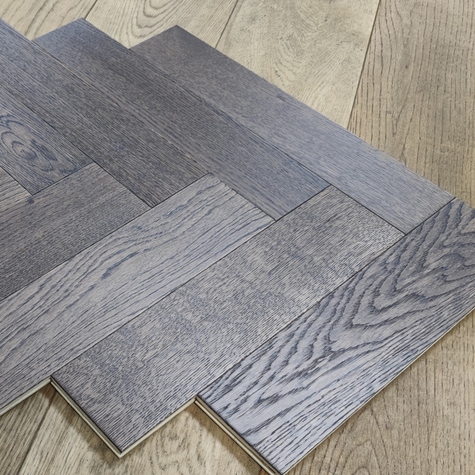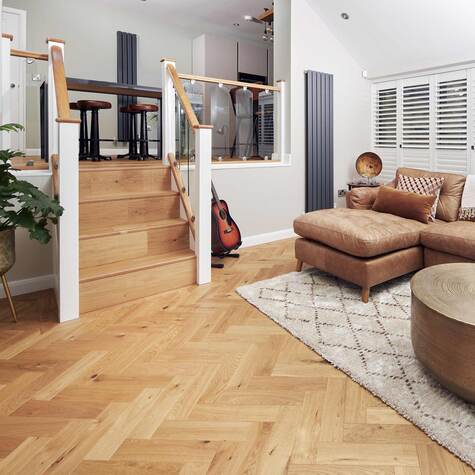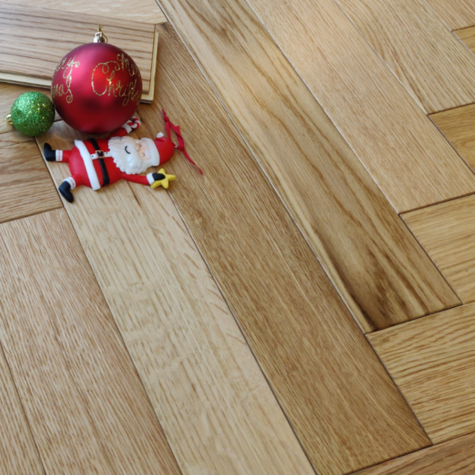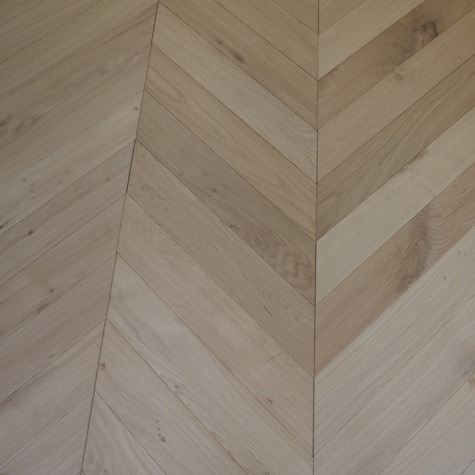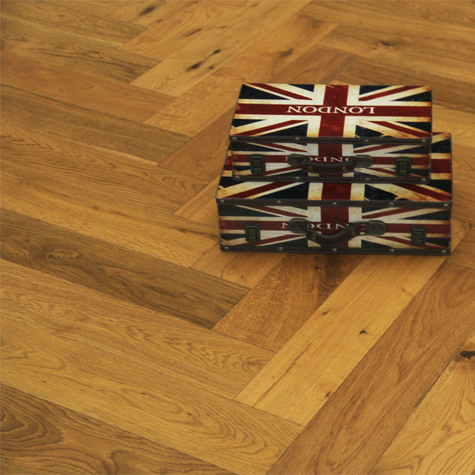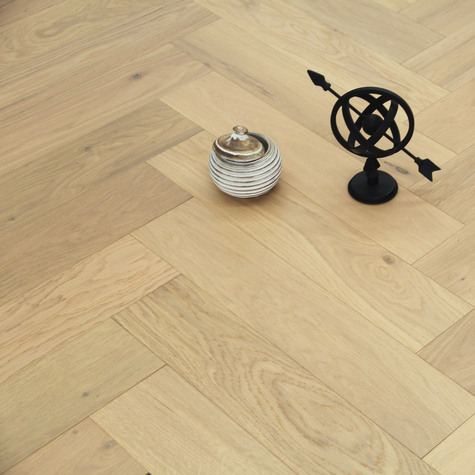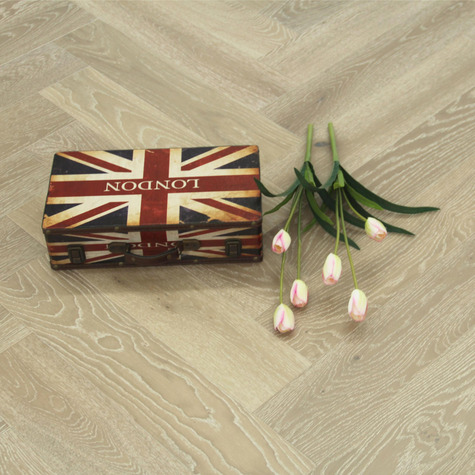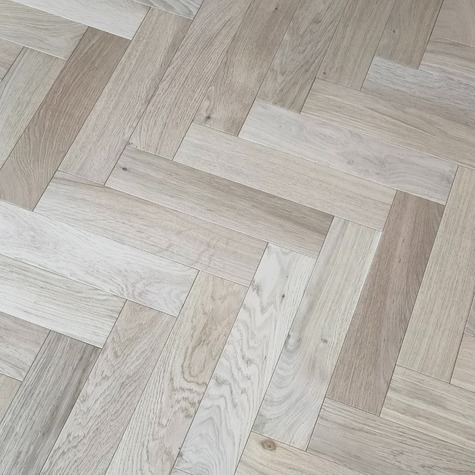Herringbone parquet style flooring is a timeless classic. This type of parquet flooring has been around since the 18th century, and it continues to be popular today. A combination of wood grains, patterns and textures make this one of the most versatile types of parquet flooring.
The name Herringbone refers specifically to the pattern created with solid wooden parquet. This type of parquetry is formed by laying out rectangles of wood in a specific manner, creating a pattern that looks like the bones of a herring fish – hence the name.
Parquet flooring is typically made up of thin strips of wood glued together to form squares or rectangles. These pieces are cut into different shapes and sizes depending on how large you want your finished piece to be. There are many different ways to lay out these pieces to create a variety of designs. Some of the most common include:
• Herringbone pattern - This design consists of four rows of alternating square and triangle-shaped pieces.
• Chevron pattern - This design is similar to the herringbone pattern, except there are five rows of alternating squares and diamonds.
What do Herringbone & Chevron mean?
Herringbone is a very popular type of flooring, especially in kitchens and bathrooms. It is named after the pattern of diagonal lines seen in the wood. These lines run parallel to each other and cross over one another, creating a unique look. This type of flooring is usually laid out in brick bond patterns.
Chevron engineered wood floorings are a newer version of traditional parquet flooring. They are often used in commercial spaces, such as restaurants and warehouses. In addition to being beautiful, they are durable and easy to maintain.
Why Would I Buy Engineered Parquet Flooring?
Engineered parquet flooring has become increasingly popular since it was introduced into the market in 2012. When compared to traditional parquet floors, engineered parquet offers a number of benefits including durability, resistance to warping and movement, ease of installation and lower costs. This article looks at why people choose engineered parquet flooring.
Why Herringbone Flooring is Popular?
Herringbone is one of the most popular patterns used in interior decorating today. This timeless style is often used in contemporary and minimalist designs, especially in small areas where space is limited. In fact, many architects are choosing herringbone over other styles because of its versatility.
The herringbone pattern creates visual interest by creating a unique look and feel. Its distinctive shape makes it stand out even against plainer floors. Because of its simple design, it works well in smaller rooms. Plus, it provides a sense of spaciousness and depth.
Why should I choose engineered herringbone flooring?
Herringbone flooring is one of the most popular types of wooden flooring. This timeless design features diagonal lines that give the appearance of a checkerboard pattern. With a variety of styles and finishes, there is something for everyone. Whether you prefer classic elegance or modern chic, we have a wide selection of designs and colours to suit every taste.
Engineered parquet block floorings are designed to mimic the look of real parquet blocks. They offer a unique combination of durability, strength, longevity and beautiful looks.
What Rooms are Suitable for Herringbone Parquet Floor?
Herringbone parquet flooring is one of the most popular styles because it looks great in just about any room. In fact, you could use it anywhere in your home—from the kitchen to the living room to the bathroom. But how do you know whether a particular room is suitable for herringbone? Read on to find out.
What types of finishes are available in Herringbone flooring?
Lacquered :- The term "lacquer" refers to clear or coloured varnish that dries to provide a tough, long-lasting finish. They are available in a variety of sheens, from ultra-matte to high-gloss, and this sheen can be further polished as needed.
Oiled : - Oiled wood flooring is very adaptable and offers a lot of advantages. Deep inside the boards, the oils provide protection and moisture resistance while allowing the wood to breathe.
A huge benefit of reapplying the oil is that any scratches and scuff marks are immediately erased, giving the finish a beautiful finish once more. Oiled wood floors require occasional oiling to maintain them fresh and vivid.
Unfinished :- Some floors are delivered with a smooth, bare surface that is ready for the installers to apply the customer's desired finish. You may actually make a floor that is uniquely yours by using different colour stains and oils, which properly complement your design.
Benefits of Herringbone Engineered Parquet Flooring
Parquet engineered wood flooring is one of the most popular types of flooring because it combines durability and style. This type of flooring is made up of individual boards that are glued together. Each board is made out of layers of different woods such as oak, maple, cherry, mahogany and birch. These layers are arranged in a specific pattern called herringbone design.
This type of flooring is ideal for homes where there is high traffic and heavy foot traffic because it is resistant to scratches and stains. It is also perfect for families with children because it is safe and soft underfoot.
Solid vs engineered herringbone floors
The choice between engineered and solid herringbone floors is about choosing between durability and style. There are pros and cons to both types of flooring, depending on the environment you live in. If your home is prone to flooding or humidity, a solid herringbone floor is probably the way to go. However, if you live in a place where temperatures vary greatly throughout the year, a engineered herringbone floor might be better suited to your needs.
Help Measuring
How much flooring do I need? This question is one of the most common asked by customers, especially those who are planning to redecorate their home. But how many square meters does it take to cover a whole house? And what about different types of flooring?
Without first knowing how much flooring you'll need, it's impossible to estimate how much it will cost. We have a straightforward approach you may utilise because, unless you're a maths pro, measuring your room might be rather overwhelming.
If your room is a rectangle, figuring this out is as easy as multiplying the length and width of your space. Since 5 x 3 = 15, your room will be 15 metres square if it is 5 metres long and 3 metres wide.
We advise dividing a non-rectangular room into rectangular parts. To calculate the area of each rectangle, multiply its width and length together. The total area is then calculated by summing the areas of each rectangle. This can be divided into two rectangles, for example, if your room is L-shaped.
And this technique still works if your room is complex. Simply divide the space into whichever many rectangles are required. Each rectangle's length and width should be multiplied to determine its area, which should then be added together to determine its overall size. (Don't forget to record the measurements as you go!)
Important advice
Important information: It's customary to add an additional 10% to your area to account for the regular installation waste. You must multiply the entire area by 0.10 to determine this. However, parquet and lvt herringbone tile floors that are installed in the middle of the room have a 15-20% waste requirement since you'll probably need to cut more boards than you would with a conventional, simple straight design.





